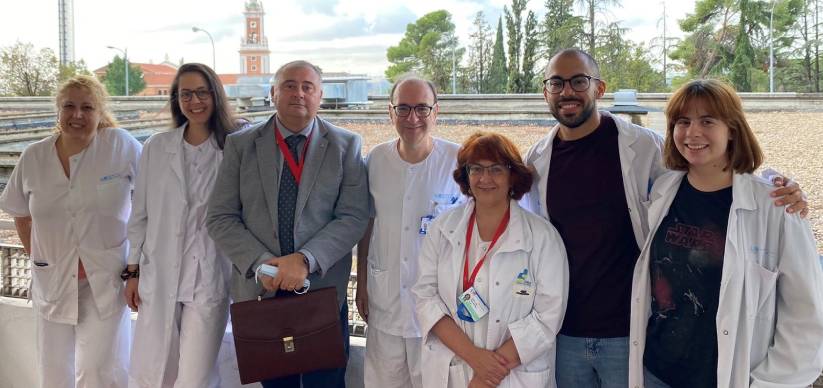
Tel. 91 330 33 21
San Carlos Clinical Hospital
C/ Profesor Martín Lagos s/n. 28040-Madrid

Samples for nucleic acid extraction from patients with haematological malignancies have been stored since 1995. This material has been used in the implementation of the various molecular analyses.
In addition, a point mutation study of the transcription factor GFI1B has been carried out. This study has allowed us to find SNPs that condition variations in expression and a mutation implicated in the transition from myelodysplasia to acute leukaemia. A disease model with the above mutation has been developed by transduction of primary haematopoietic cells with lentivirus; followed by analysis of differentiation, cell cycle, and apoptosis. Work has also been done on the study of epigenetic modifications of GFI1B throughout normal haematopoiesis.
Finally, three cis-regulatory elements of GFI1B have been discovered and their function has been studied.
Molecular and cellular study of normal and malignant haematopoiesis
a) Molecular and cellular study of normal and malignant haematopoiesis.
b) Study of point mutations in transcription factors in patients with acute leukaemia and myelodysplasia by dHPLC.
c) Models of leukaemic transformation by lentivirus transfection in human primary haematopoietic cells:
Differentiation and apoptosis studies.
Study of protein complexes.
Treatment of haematological malignancies
a) Analysis of the effectiveness of autologous haematopoietic stem cell transplantation versus conventional chemotherapy in patients over 60 years of age with myeloblastic leukaemia. We have developed a graphical medical record system that allows immediate access to information for clinical studies. Thus, we have stored data from a caseload of more than 1000 patients, invaluable material for retrospective studies.
We have pioneered treatment with autologous haematopoietic stem cell transplantation that can be compared with the use of conventional chemotherapy.
b) Phase III clinical trials with therapeutic protocols in oncohaematology (PETHEMA group).
Analysis of the results of the therapeutic protocols of the PETHEMA group in which we are involved, particularly those in which the principal investigator is a member of the group: LENA-LAM-5, Renvel, Panobinodara, LYM3002, Centocor, GEM2010MA65, Azabache, and Prodecyte.
To organise our sample collection within the Biobank of the Hospital Clínico San Carlos and include viable cells for culture.
To carry out molecular studies in relation to the therapeutic protocols of the PETHEMA group, in particular a study of histone acetylation in the Panobinodara protocol, which includes the use of the histone deacetylase inhibitor Panobinostat.
Study of point mutations in the GFI1B gene
a) To continue the study of point mutations of the GFI1B gene in patients with acute leukaemia, extend it to cases of myelodysplasia and include the regulatory areas we have discovered.
b) To study in depth the effects of blocking erythroid differentiation and increasing survival observed in the mutation we have discovered in the GFI1B gene. Analysis of the protein complexes with which the normal and mutated forms interact.